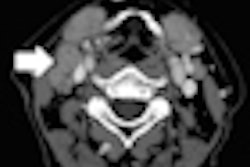Patients treated with intensity-modulated radiation therapy (IMRT) for head and neck cancer reported increasingly better quality of life after treatment than patients receiving other forms of radiotherapy, according to a study presented at the Multidisciplinary Head and Neck Cancer Symposium in Phoenix.
At a January 27 press conference, Dr. Allen Chen, a radiation oncologist at the University of California, Davis, reported the findings of a quality-of-life questionnaire that was prospectively administered to 155 patients. Eighty-four patients (54%) were treated using IMRT with inclusion of the low neck in an extended field. Seventy-one (46%) patients received 3D conformal radiotherapy (3D-CRT) using opposed lateral fields matched to a low anterior neck field.
The purpose of the study was to evaluate the effect of newer radiation therapy treatments on patients' long-term quality of life, Chen said. Patients were surveyed with the University of Washington Quality of Life questionnaire every six months following treatment during a period of more than three years.
IMRT patients gave better overall rankings of their quality of life, Chen reported. At one year post-treatment, 51% of IMRT patients ranked their quality of life as "very good" or "outstanding," compared with 41% for the other group. Furthermore, two years after treatment, the percentage for the IMRT patients increased to 73%, compared with 49% for the 3D-CRT group.
Also, at their last follow-up exam, 80% of the IMRT patients reported that their health-related quality of life was "much better" or "somewhat better" than in the month before they were diagnosed with cancer. Only 61% of the 3D-CRT group gave the same response.
Interestingly, salivary function -- i.e., dry mouth -- was the only individual category in which patients reported a statistically significant difference in quality of life. IMRT patients had a median score of 70.5 for their satisfaction with saliva production, compared with 50.6 for 3D-CRT patients 12 months after treatment. Two years following treatment, the scores were 77.3 and 53.0, respectively, for the two groups.
"We first confirmed what has been known for a long time: that IMRT can improve salivary function," Chen said. "Historically, this is important because chronic dry mouth has been one of the most common side effects. It's not only a daily nuisance, but it's also a chronic reminder of one's cancer experience many years out from treatment."
The patients will continue to be followed indefinitely to determine if the advantages of IMRT are sustainable over time.



















